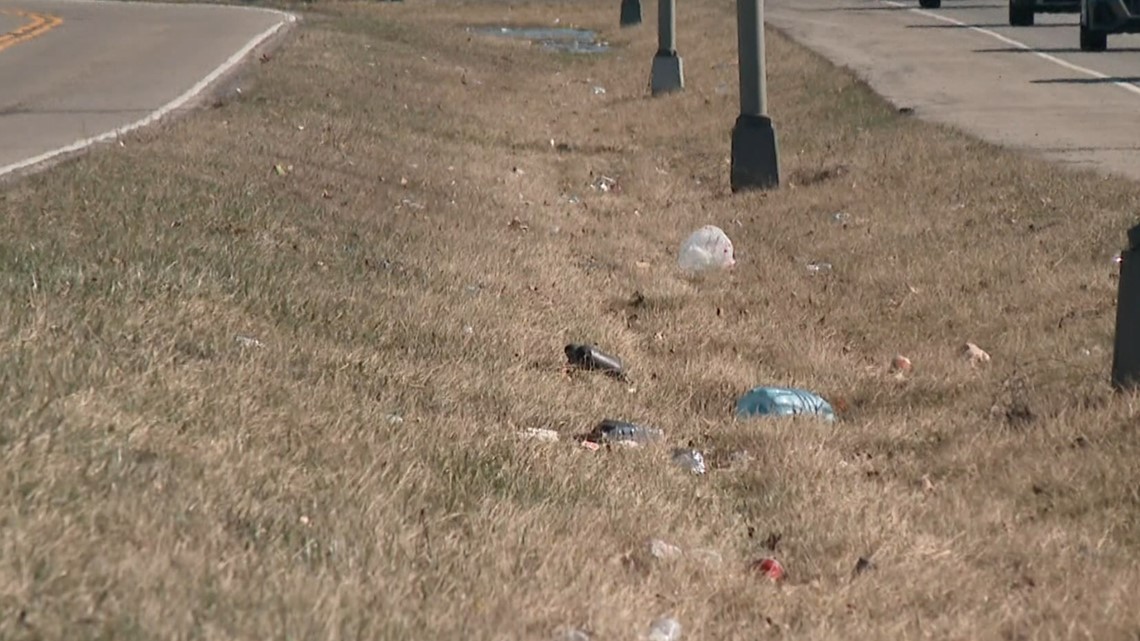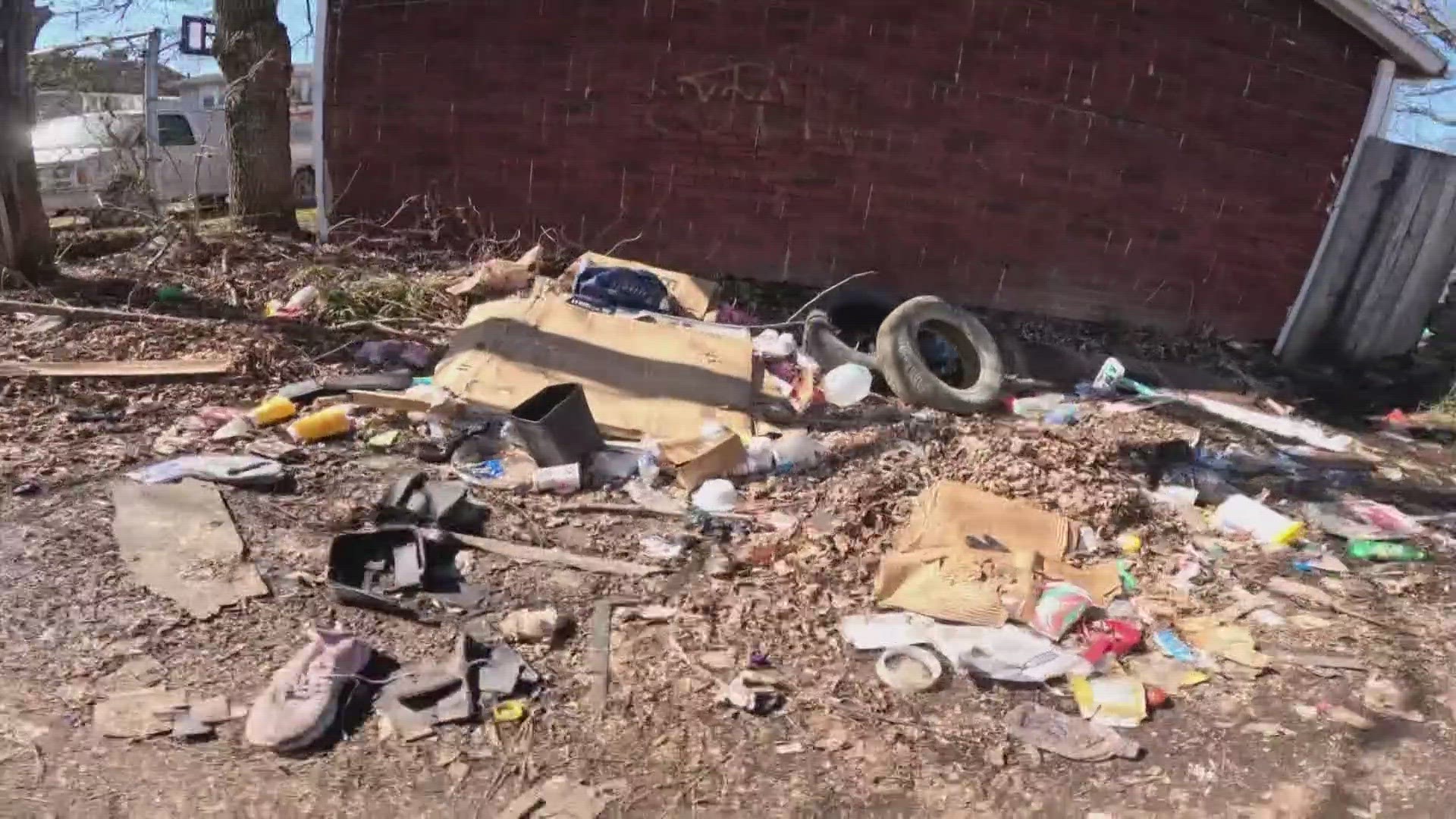COLUMBUS, Ohio — In the 1970s, a national television litter campaign was produced for Keep America Beautiful.
The ad featured an actor playing a Native American in a canoe coming ashore to find litter thrown at his feet. He turns to the camera with a tear down his face with the tagline, "People start pollution. People can stop it."
The ad was a sensation and placed a spotlight on litter in America.
Today, the litter issue is not only an eyesore in Columbus, but it's costing taxpayers millions to clean up.
The grassy side of Nelson Avenue in East Columbus is a sea of litter.
“Chip wrappers, chip bags you've got Coke bottles, Pepsi bottles you've got lids,” said Tim Swauger, director of Refuse Division for the City of Columbus.
There’s so much litter here he said the city can’t keep up.
“This is what we've been battling. Quite honestly it's getting worse. We cleaned this six weeks ago,” he said.
Using the city’s litter index map, 10TV drove through some of the worst littered streets and alleys the city documented.
We saw grocery bags stuck in trees, illegal dumping, strewn bottles, plastic food containers and more.
Tonya Bronson, a 43-year resident of Columbus, said she doesn't need a website to tell her litter in the city is an issue.
We saw her biking at the corner of Home Acre and Cleveland Avenue.
“It's getting worse. This is actually clean for this alley,” she said.
The city’s litter index doesn’t provide live data, instead, it’s based on the previous year’s survey done by trash haulers.
The city does this to compare if neighborhoods are improving are getting worse year to year.
“We are spending millions of dollars to clean up litter,” said Swauger.
Last year, the city said it spent $2.53 million on litter clean-up which includes labor, equipment and disposal.
Swauger said the city will pick up litter during mowing season, but it always returns a few weeks later.
He said the lack of a local, state and national litter campaign would help get the word out that littering is a crime. In Ohio, littering is a misdemeanor punishable by a $500 fine and 60 days in jail.
Some people are so tired of what they're seeing they've painted warnings on their property telling people this is not a place to illegal dump.
Bill Newman said it's more than a trash problem.
“It not only degrades the neighborhood but it also affects the environment as well,” he said.
The chemicals in those discarded plastic bottles and cigarette butts don't degrade.
“It's not just unsightly, it can get into the storm sewer, which gets into the waterway which gets into our drinking water,” said Swauger.
Two years ago, the city hired two special duty police officers to catch haulers who fail to cover their loads of trash.
“They were able to write over 90 citations for uncovered loads,” said Swauger.
Swauger said that’s only a small part of the growing litter problem and if the city's says is going to solve the problem, it’s going take everyone to tackle the trash.
“We know we can't solve this on our own this is going to residents to help us solve this."
Last year, more than 11,500 volunteers devoted 30,000 hours picking up more than 365,000 pounds of litter.
It's not just a city problem. According to ODOT, the state spends $10 million a year on litter clean-up. The agency says since 2019, along with the Department of Rehabilitation and Corrections and Adopt-a-Highway program, it spent more than 940 hours picking up trash and collected more than two million bags of litter.


ODOT says according to Interstate Business Solutions, which helps track litter for the state, the most littered areas in Central Ohio are:
I-71 from I-70 to SR-665. There is a landfill located near SR-665 so trash hauling is prevalent through that area.
I-270 on the east side from Morse Road to I-670. A city of Columbus transfer station is also located here.
KickButtColumbus! is happening on Saturday, an event where volunteers help remove cigarette butts off the road. To sign up, click here.

